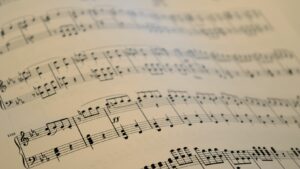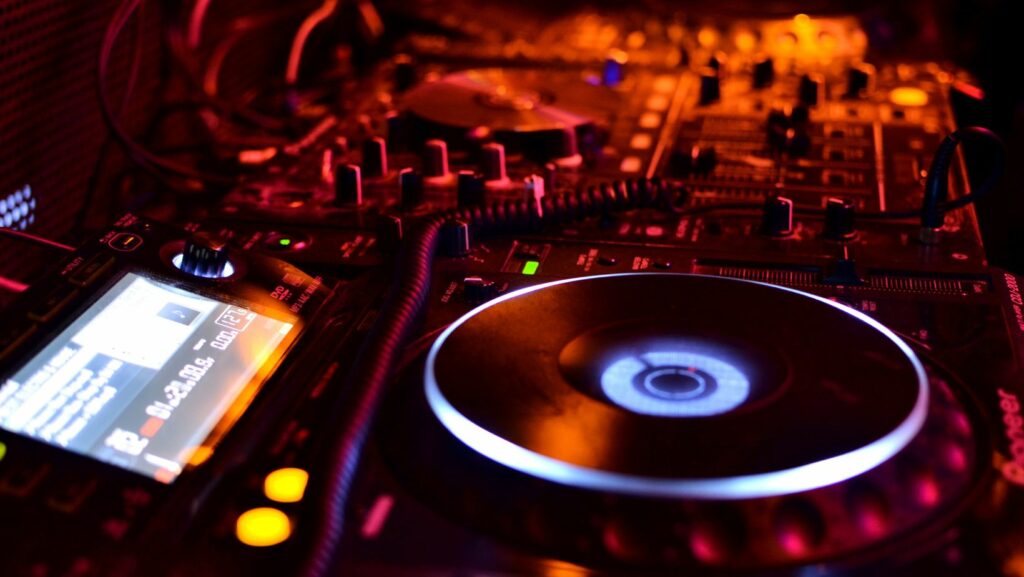Unlocking the mysteries of music isn’t as daunting as it seems. With the right guide, anyone can delve into the world of music theory and composition. This article will illuminate the path for those eager to explore the magic behind melodies and harmonies that captivate us all.
Whether you’re a budding composer, a seasoned musician, or just a curious enthusiast, understanding music theory is an enriching journey. It’s a journey that opens up new dimensions in the way we perceive and appreciate music.
Dive into this exploration of music theory and composition course. It promises to be an enlightening experience that will deepen your understanding and enhance your love for music. Let’s embark on this exciting journey together.
Music Theory and Composition Course
 This section gives an in-depth look into the fundamental concepts of music theory that bolster the understanding and application of music composition.
This section gives an in-depth look into the fundamental concepts of music theory that bolster the understanding and application of music composition.
Mastering the language of music starts with the basics of notation and scales. Notation, the visual representation of music, entails symbols that convey pitch, rhythm, and tempo. For instance, musicians interpret notes on a treble clef differently from those on a bass clef.
Scales, on the other hand, act as the building blocks of melodies. Comprising a sequence of notes arranged by ascending or descending frequency, scales set the tonal structure for compositions. The Major and Minor scales, examples of diatonic (seven-note) scales, hold prime importance in Western music.
The Role of Harmony and Melody in Composition
Harmony and melody are paramount constituents in creating dynamic and engaging compositions. Harmony, the merger of simultaneous tones, enriches the texture of a piece, enhancing its emotional impact. A composition, like a popular rock song, might employ power chords, a type of harmony that consists of the root note and the perfect fifth.
Melody, the forefront succession of musical notes, elicits the distinctive nature of a piece. Repeating a catchy sequence of notes, much like the chorus in a pop song, imbues a composition with a sense of familiarity and attractiveness.
Advancing to Intermediate Composition Techniques
 In the world of music theory and composition, grasping the concepts of counterpoint and rhythm and exploring various musical genres ushers composers into intermediate level techniques. These techniques augment one’s ability to not only create but also appreciate complex musical pieces. They provide a deeper understanding of music and broaden perspectives beyond the basics of notation, scales, melody, and harmony.
In the world of music theory and composition, grasping the concepts of counterpoint and rhythm and exploring various musical genres ushers composers into intermediate level techniques. These techniques augment one’s ability to not only create but also appreciate complex musical pieces. They provide a deeper understanding of music and broaden perspectives beyond the basics of notation, scales, melody, and harmony.
Counterpoint and rhythm sit at the core of music theory and composition. Delving into counterpoint, composers acknowledge the interplay of independent melodic lines, embracing the capacity to produce music imbued with intrigue and complexity. Think of Bach’s fugues, which embody the essence of contrapuntal writing.
On to rhythm, it’s this primary pattern in time that gives music its structure and coherence. Comprehending intricacies of rhythm allows composers express emotions more effectively. For instance, a rapid succession of notes, known as staccatos, might evoke feelings of excitement, while longer, connected notes, termed legatos, could convey a sense of tranquility.
The Impact of Technology on Music Composition
 The advent of technology has revolutionized the arena of music composition, making it more accessible and varied. Cutting-edge technology presents musicians with new tools and platforms, amplifying their capability to create distinct and impactful music. This impact is palpable in two significant areas: the advent of software and tools for music creation and the digital transformation of music education.
The advent of technology has revolutionized the arena of music composition, making it more accessible and varied. Cutting-edge technology presents musicians with new tools and platforms, amplifying their capability to create distinct and impactful music. This impact is palpable in two significant areas: the advent of software and tools for music creation and the digital transformation of music education.
Software and tools, many of them integrated with technology, act as catalysts in the music creation process, opening doors to unprecedented possibilities. Musicians can leverage digital audio workstations (DAWs), synthesizers, and samplers that provide comprehensive control over elements of sound and rhythm. For instance, DAWs like Ableton Live and Logic Pro X feature a highly-responsive interface, where composers manipulate various soundwaves, creating an audioscape that resonates with their unique musical perception.
Applications such as StaffPad enable composers to write music in a traditional, handwritten style but with digital advantages, enhancing the precision and speed of notation. The use of MIDI keyboards, sequencers, and drum machines aids in delivering a panoramic array of musical styles, from groovy rhythms to sweeping melodies.

